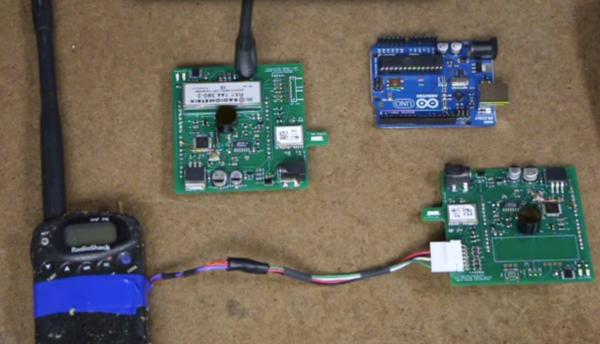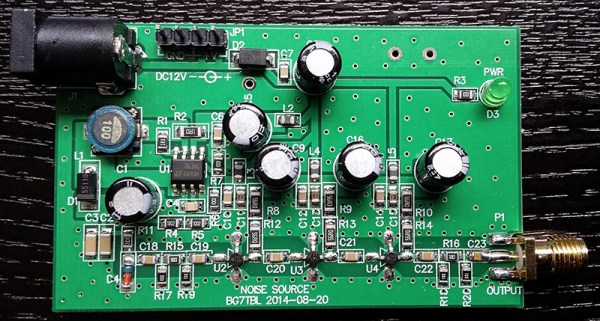We capped off day-2 of the Hamvention with an unexpected rain shower, and some arcing back in the hotel room. Historically, Saturday is the best attended day of the show. As normally, we spent most of the day outside in the flea market. One of our friends allowed us to use his AN/GRC-9 army surplus radio to check into one of the nets. The radio was powered by hand-crank. Later, we attended a forum on the construction of HF antennas for camping trips, and obtained parts for our project back in the room. More about that later? Overall, a great day.
amateur radio222 Articles
Hamvention Just Getting Started
For one weekend in May, the landscape of Dayton, Ohio is dominated by ham radio operators. The Dayton Hamvention (“ham-convention”), sponsored by the Dayton Amateur Radio Association, is the preeminent gathering of hams from around the world. This is where industry rolls out new products, friends gather to catch-up, and old equipment is “re-distributed” amongst willing parties in the sprawling swap meet which subsumes the entire Hara Arena parking lot where you can find almost anything and meet some of the most interesting people.
Hamvention 2015, Less Than One Week Away!
The largest amateur radio and electronics swap meet on the planet is less than one week away. Will you be there?
The Dayton Hamvention has been an annual swap meet since 1952. There were 24,873 attendees during last year’s hamvention alone, that is a huge number of radio enthusiasts in one place!
For those of you interested in using vintage and used test equipment you can find anything at Hamvention. I built my entire laboratory form equipment purchased here. It has often been said, ‘if you can’t find it at Hamvention you don’t need it.’
This year Scott Pastor (KC8KBK) and I will be covering Hamvention for Hackaday. We plan to provide one update after each day of Hamvention summarizing the day’s events. We hope to see you in Dayton next week!
TV Broadcasts From Outer Space
According to ARISS (Amateur Radio on the International Space Station), the ISS will be sending us images using slow-scan TV on April 11th in honor of Russian cosmonaut Yuri Gagarin’s birthday. Tune in and you’ll get to see 12 different commemorative images from space, and of course bragging rights that you directly received them with your radio setup.
For those who aren’t Ham radio types, slow-scan TV (SSTV) is a radio mode where the pixels in an image are sent by encoding the brightness and/or color as a tone, a lot like a modem, fax machine, or the data cassette tapes of yore.
The ISS uses PD-180 which is a color mode where each pixel’s red, green, and blue values are encoded in a pitch between 1500 and 2300 Hz. Each image takes just over three minutes to transmit, meaning you’ll have to track the ISS pretty well as it travels across the sky. But don’t fret, they send each message for around an hour, so you have a good chance to receive it. (We’ll be the first to admit that a frame rate of one frame in 187 seconds isn’t really “TV”, but that’s what they call it.)
SSTV’s use in the space program goes back even before the moon landing, but with modern software-defined radio setups, it all becomes a lot more convenient to receive. The ISS folks do this periodically as a service to the amateur radio community, so it’s a good time to try out your chops.
We’ve covered ARISS before, but Yuri’s birthday is always a good reason to celebrate the folks out there. And if you need a reminder of when to look up, this hack right here has you covered.
If you do receive some images, you can upload them to the ARISS Gallery. Or you can just hit refresh to see them as others post them up.
APRS Tracking System Flies Your Balloons
Looking for a way to track your high-altitude balloons but don’t want to mess with sending data over a cellular network? [Zack Clobes] and the others at Project Traveler may have just the thing for you: a position-reporting board that uses the Automatic Packet Reporting System (APRS) network to report location data and easily fits on an Arduino in the form of a shield.
The project is based on an Atmel 328P and all it needs to report position data is a small antenna and a battery. For those unfamiliar with APRS, it uses amateur radio frequencies to send data packets instead of something like the GSM network. APRS is very robust, and devices that use it can send GPS information as well as text messages, emails, weather reports, radio telemetry data, and radio direction finding information in case GPS is not available.
If this location reporting ability isn’t enough for you, the project can function as a shield as well, which means that more data lines are available for other things like monitoring sensors and driving servos. All in a small, lightweight package that doesn’t rely on a cell network. All of the schematics and other information are available on the project site if you want to give this a shot, but if you DO need the cell network, this may be more your style. Be sure to check out the video after the break, too!
Measuring Filters And VSWR With RTL-SDR
Once again the ubiquitous USB TV tuner dongle has proved itself more than capable of doing far more than just receiving broadcast TV. Over on the RTL-SDR blog, there’s a tutorial covering the measurement of filter characteristics using a cheap eBay noise source and an RTL-SDR dongle.
For this tutorial, the key piece of equipment is a BG7TBL noise source, acquired from the usual online retailers. With a few connectors, a filter can be plugged in between this noise source and the RTL-SDR dongle. With the hardware out of the way, the only thing remaining is the software. That’s just rtl_power and this wonderful GUI. The tutorial is using a cheap FM filter, and the resulting plot shows a clear dip between 50 and 150 MHz. Of course this isn’t very accurate; there’s no comparison to the noise source and dongle without any attenuation. That’s just a simple matter of saving some scans as .csv files and plugging some numbers in Excel.
The same hardware can be used to determine the VSWR of an antenna, replacing the filter with a directional coupler; just put the coupler between the noise source and the dongle measure the attenuation through the range of the dongle. Repeat with the antenna connected, and jump back into Excel.
Design & Build Part 2: Multi-Band, Phasing SSB, And SDR
Amateur radio is the ultimate hacker’s hobby. You can design, build, and put on the air your own high power transceivers. And with this homemade gear you are able to reach out directly, not relying on any infrastructure whatsoever, to connect with people all over the world. It is a thrilling experience to communicate with that long distance station using equipment you created, where you know at that instant what every single transistor is doing as you key down the mic.
In a previous post I described how SSB radio equipment worked and provided an example of a single-band 20m SSB transceiver. In this post I will discuss a multi-band SSB transceiver, an entire homemade amateur station including amplifiers, and conclude with software defined radio (SDR) that you can make in one weekend.
Continue reading “Design & Build Part 2: Multi-Band, Phasing SSB, And SDR”















